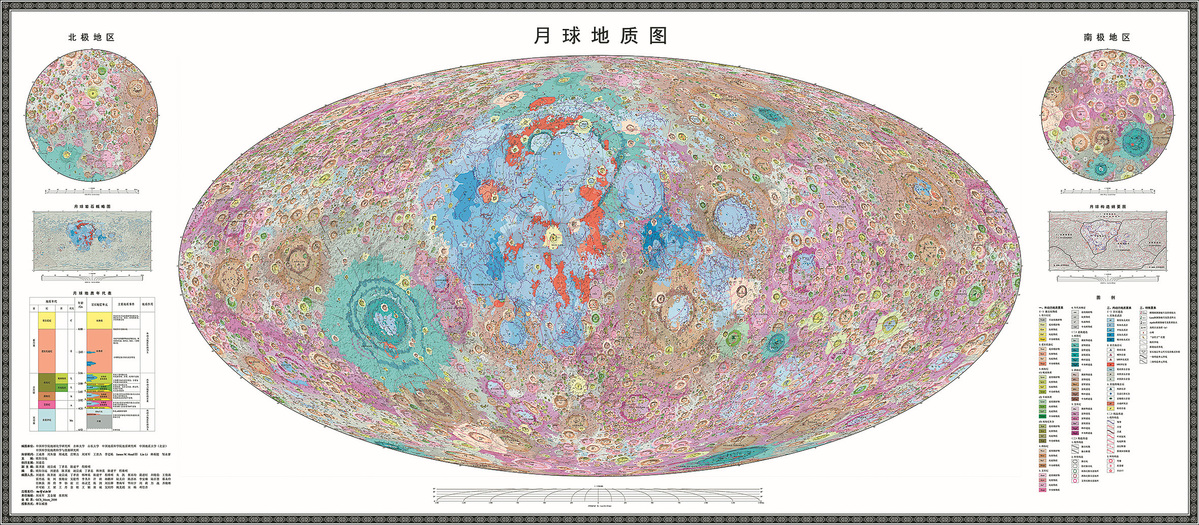
A geological map of the Moon is included in the new atlas. [Photo provided by Chinese Academy of Sciences via Xinhua]
The world's first complete high-definition geographic atlas of the Moon, released by China on Sunday, will provide basic mapping data for future lunar research and exploration.
The atlas set, available in both Chinese and English, includes the Geographical Atlas of the Moon and Mapped Quadrants of the Geographical Atlas of the Moon, according to the Institute of Geochemistry of the Chinese Academy of Sciences.
„The geological atlas of the Moon is very important for studying the evolution of the Moon, choosing a site for a future lunar research station, and exploiting lunar resources,” said Ouyang Ziyuan, a CAS academic and lunar scientist.
Liu Jianzhong, a senior researcher at the institute, said: „The world has seen remarkable progress in the field of lunar exploration and scientific research over the past decades, which has greatly improved our understanding of the Moon. However, the lunar geological maps published in the Apollo era have not been replaced for about half a century, and with the development of lunar geological studies, the The old maps can no longer meet the needs of future scientific research and lunar exploration.”
Since 2012, Ouyang and Liu have led a team of scientists and cartographers from various research institutions in efforts to compile the atlas.
With a detailed and systematic understanding of the moon's origin and evolution, the team compiled the atlas based on scientific survey data obtained from China's Chang'e Lunar Exploration Project and other research results from Chinese and international expeditions, Liu said.
This atlas collection not only provides basic data and scientific references for the development and implementation of scientific goals in China's lunar exploration program, but also fills a gap in China's collection of geological maps of the Moon and planets. The evolution of the moon and the solar system, Liu said.
Based on the perspective of lunar dynamic evolution, Chinese researchers established a creatively updated lunar geological time scale, objectively depicting the lunar geological evolution and clearly showing the characteristics of lunar tectonic and magmatic evolution.
The Atlas set is integrated into the Digital Lunar Cloud Platform built by Chinese scientists and will help with lunar science research and science education, as well as landing site selection, lunar resource exploration and route planning for China's future lunar exploration programs, Liu said.
The upcoming Chang'e 6 mission is expected to collect samples from the Apollo basin at the far south pole-Aitken basin of the moon, meaning that material ejected from the ancient landscape could be collected in the process.
„Our map can provide macroscopic geological background to improve the scope and efficiency of model research,” said Liu.
Gregory Michael, a senior scientist at the Free University of Berlin in Germany, said the compilation of the atlas was an enormous project that required the organization and cooperation of many well-known Chinese researchers over many years. Complete result.
„This map, in particular, is the first in the world to use all the data since the Apollo era,” he said. „It builds on the achievements of the international community and China's own achievements in the past decades. The highly successful Chang'e project will be a starting point for every new question of lunar geography, And will become a primary resource for researchers studying all kinds of lunar processes.
Xinhua

„Oddany rozwiązywacz problemów. Przyjazny hipsterom praktykant bekonu. Miłośnik kawy. Nieuleczalny introwertyk. Student.
